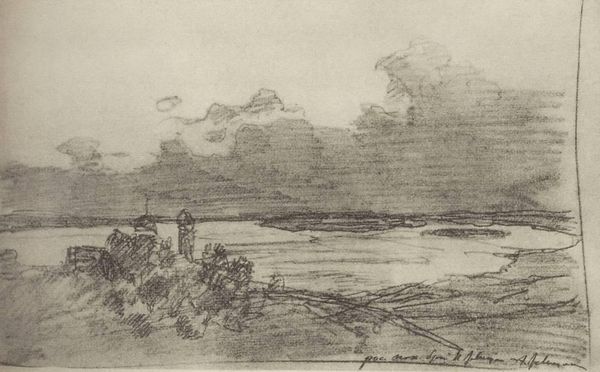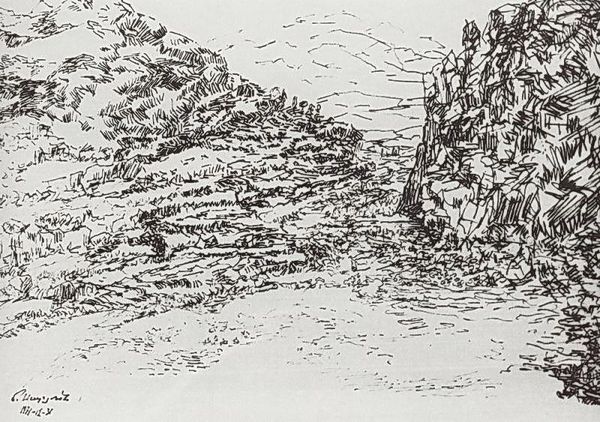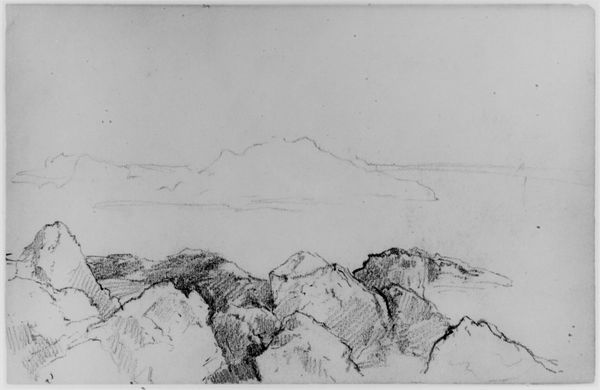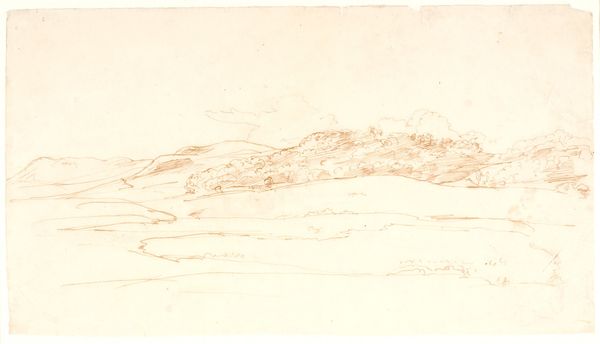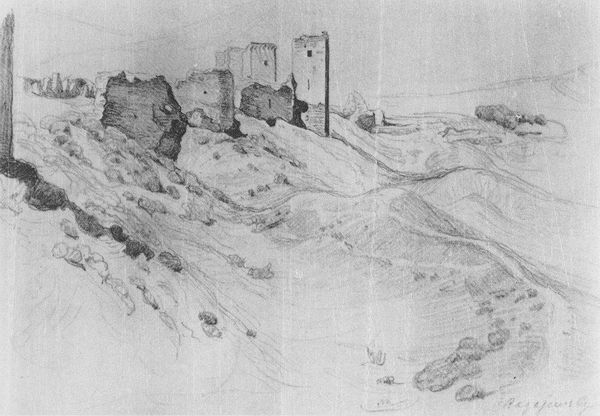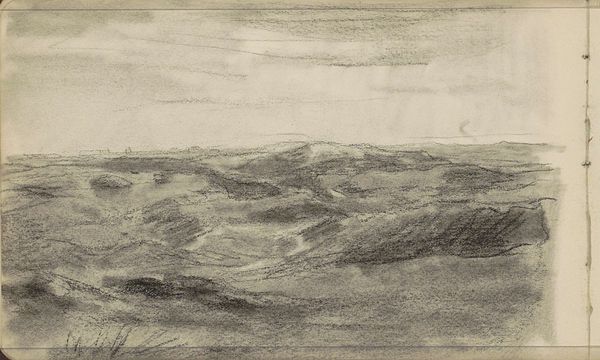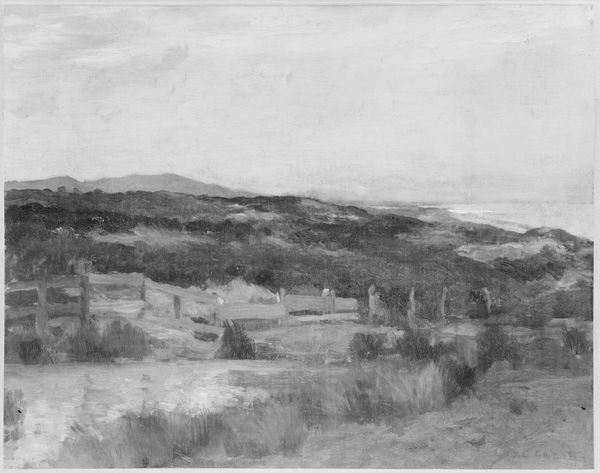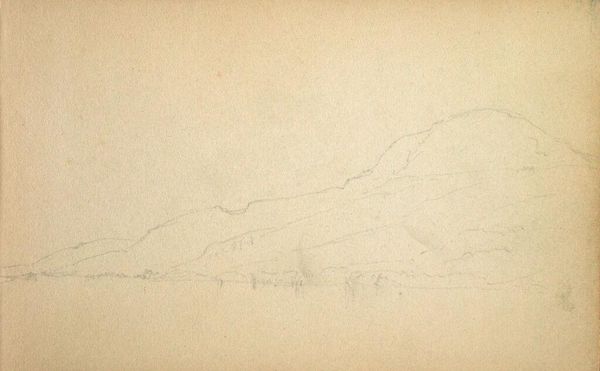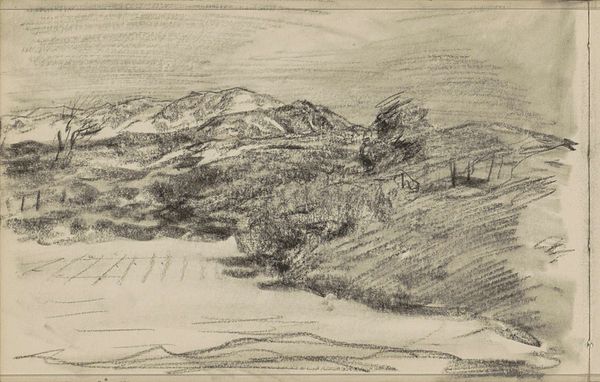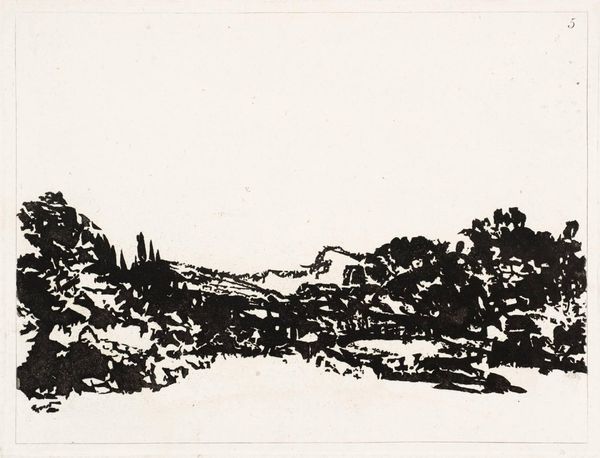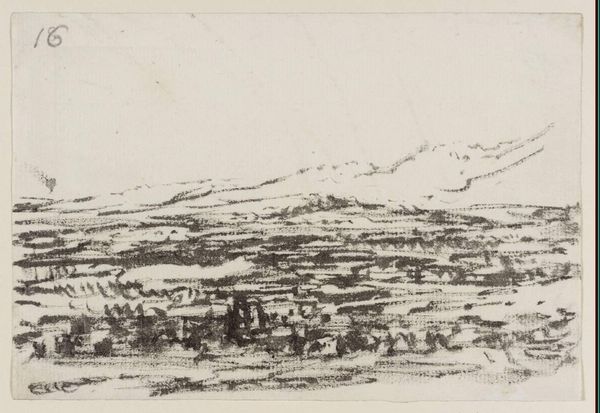
drawing, charcoal
#
drawing
#
impressionism
#
landscape
#
nature
#
line
#
charcoal
#
realism
Dimensions: 35.1 x 50.8 cm
Copyright: Public domain
Curator: We’re looking at a drawing titled "Low Tide on the Coast" by Charles-François Daubigny. He worked in the 19th century and was quite influential in the development of Impressionism. Editor: There’s a real stillness to it. It’s just charcoal, very minimal, but it evokes a sense of immense space, the kind you only get at the edge of the sea. The light is extraordinary too, just variations of gray, almost monochrome. Curator: Daubigny’s use of charcoal is crucial here. He was deeply engaged in representing the effects of light on landscapes and used different materials to depict specific atmospheric qualities. It is more than just landscape art, the charcoal is what the picture is. Editor: Precisely! The starkness really underscores that material relationship. And the tide, imagine what is left behind; broken shells, rotting weeds. Its so tactile. It’s interesting how the material gives access to understanding how the tide erodes. The labor that time and nature apply to the land. Curator: Absolutely. Consider how the 19th century was transforming with industrialization; nature became an increasingly idealized and politicized subject. Coastal scenes became emblematic of freedom. The state's responsibility to preserving natural spaces. Editor: Thinking about the context, the accessibility of materials, makes it an almost democratic act of art-making. Simple, immediate and directly from the earth. Its fascinating to see him working class materiality. It shows us the art worlds evolving accessibility to those of differing financial status. Curator: The subtleties in the composition encourage us to slow down, to reflect not only on the landscape, but our cultural perception of it and who decides what to be seen. The social aspect becomes hard to ignore. Editor: Seeing the textures makes it such a sensory engagement, its almost hard to detach from the work when there are so many traces of labor within it. Curator: Reflecting on this, I see Daubigny’s "Low Tide on the Coast" as both a depiction and a commentary on the period. Editor: I’m left appreciating the materiality of a quiet moment—a meditation on process, the place, and nature’s ceaseless work.
Comments
No comments
Be the first to comment and join the conversation on the ultimate creative platform.
